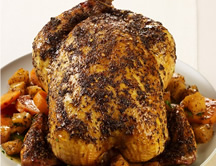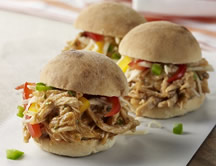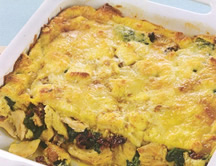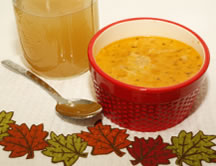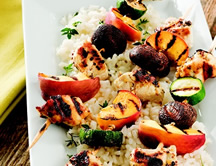Choosing the right cut
-
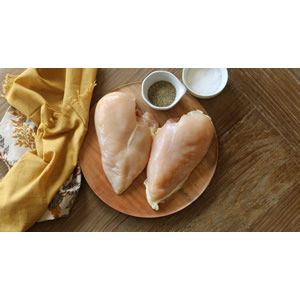
Boneless Skinless Breast
A popular cut! It's also a lean protein and has many cooking options—pan fried, oven roasted or stuffed. This cut comes in the form of a fillet or a butterfly.
-
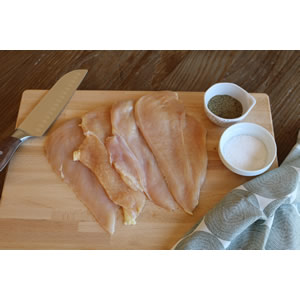
Boneless Skinless Breast Thin Slice
A convenient, lean cut of protein that provides a quicker cooking option than a whole breast fillet or butterfly cut.
-
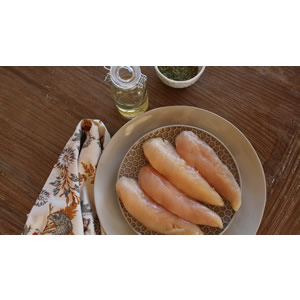
Tenders
Juicy, tender pieces of white meat that are often used as a breaded finger food. They also make a great alternative to a whole breast when cut into pieces for recipes.
-
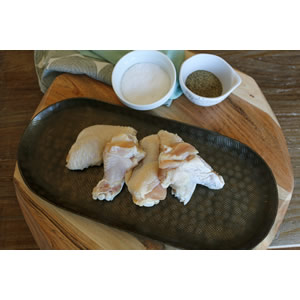
Wings
Full of flavor and fun to eat, wings are great breaded or simply seasoned, fried or grilled. Add your favorite dipping sauce for a punch of flavor!
-
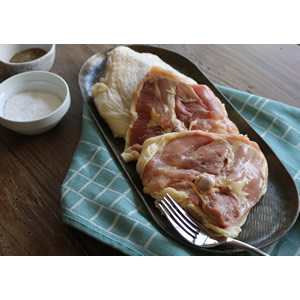
Thigh
Bone-in thighs are great for grilling. With a higher fat content and fuller flavor, if purchased boneless, skinless, they're a great alternative for boneless breast meat.
-
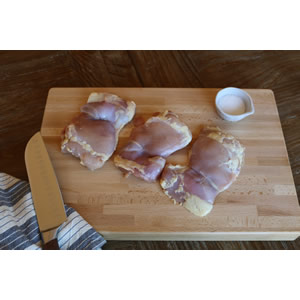
Boneless Skinless Thigh Meat
Ideal for almost any recipe and packed full of flavor. Use as an alternative for breast meat in recipes for a juicy, tender, less expensive option.
-
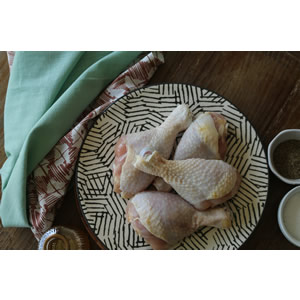
Drumstick
Ideal for baking or grilling, drumsticks make a great finger food for kids and picnics. Pull back the skin and allow a marinade to soak into this flavorful cut before cooking.
-
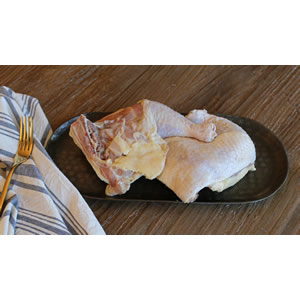
Leg Quarter
Very similar to a whole leg but includes a portion of the back bone. Consists of a combination of dark meat with drumstick and thigh for full flavor and a hearty serving. Great for baking or grilling!
-
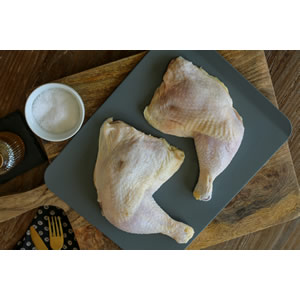
Whole Leg
A whole leg consists of the drumstick and the thigh. This dark meat is great for grilling season and full of flavor.
-
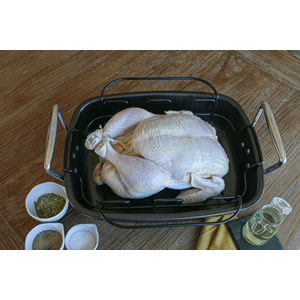
Whole Chicken
A whole chicken consists of a butterfly breast, 2 tenders, 2 thighs, 2 drumsticks, and 2 wings. It does not include giblets (like heart, liver and gizzard). Most popular for grilling, roasting and frying (cut-up), this option is easy on the wallet and a great option for families. Everyone gets what they want!
PRODUCT SAFETY AND HANDLING
Safe steps in food handling, cooking, and storage are essential to prevent foodborne illness. You can't see, smell, or taste harmful bacteria that may cause illness. In every step of food preparation, follow the four Fight BAC!™ guidelines to keep food safe:
- CLEAN! Wash hands and surfaces often
- SEPARATE! Don't cross-contaminate meats with other foods
- COOK! Cook to proper temperatures
- CHILL!- Refrigerate promptly
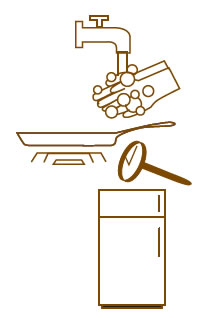
Shopping
- Purchase refrigerated or frozen items after selecting your non-perishables.
- Never choose meat or poultry in packaging that is torn or leaking.
- Do not buy food past "Sell-By," "Use-By," or other expiration dates.
Storage
- REFRIGERATE. Always refrigerate perishable food within 2 hours (or 1 hour when the temperature is above 90° F).
- TEMPERATURE. Check the temperature of your refrigerator and freezer with an appliance thermometer. The refrigerator should be at or below 40° F, and the freezer should be at or below 0° F.
- COOK OR FREEZE. Fresh poultry should be cooked or frozen within 2 days.
- WRAP SECURELY. Wrap perishable food such as meat and poultry to maintain quality, and to prevent meat juices from getting onto other food.
- MAINTAIN QUALITY when freezing meat and poultry in its original package by rewrapping packages with foil or plastic wrap meant for the freezer.
Preparation
- DO wash hands with warm water and soap for 20 seconds before and after handling food.
- DO NOT cross-contaminate. Keep raw meat, poultry, fish, and their juices away from other food and clean up with hot, soapy water.
- SANITIZE cutting boards, utensils, and countertops with a solution of one tablespoon of unscented, liquid chlorine bleach in one gallon of water.
- MARINATE meat and poultry in a covered dish in the refrigerator.
Source: United States Department of Agriculture, Food Safety Inspection Service (USDA-FSIS)
Cooking and Reheating
Cooking
Cook all poultry to an internal temperature of 165°F, or until juices run clear with no hint of pink. Always use a meat thermometer for accuracy.
LEFTOVERS AND REHEATING
- Discard any food left out at room temperature for more than 2 hours (1 hour if the temperature was above 90°F).
- Place food into shallow containers and immediately put in the refrigerator or freezer for rapid cooling.
- Use cooked leftovers within 3 to 4 days.
- Reheat leftovers to 165°F. Use a meat thermometer for accuracy.
Serving
HOT FOOD should be held at 140°F or warmer. When serving food at a buffet, keep hot food hot with chafing dishes, slow cookers and warming trays. Always use a food thermometer for accuracy.
COLD FOOD should be held at 40°F or colder. When serving large groups, keep cold food cold by nesting dishes in bowls of ice or use small serving trays, replaced often. Always use a food thermometer for accuracy.
![VAZ-08-24-2020-305 Amick Farms 15z [Converted] VAZ-08-24-2020-305 Amick Farms 15z [Converted]](https://www.amickfarms.com/wp-content/uploads/2019/03/VAZ-08-24-2020-305-Amick-Farms-15z-Converted-1024x301.png)
